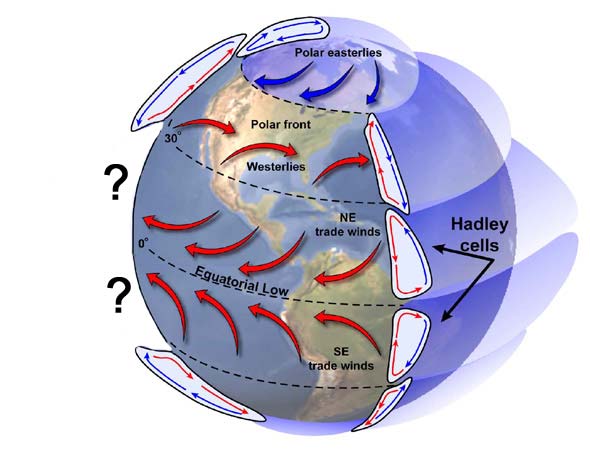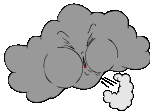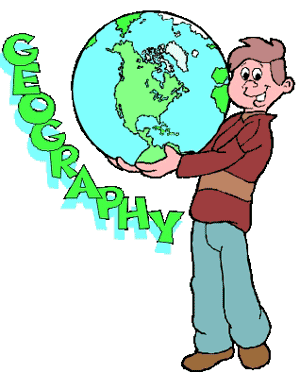|
|
 |
|
|
|
 |
| |
|
|
 |
Weather
Basics |
2. Global circulation
Worksheet 2
Greenhouse effect and global circulation
|
|
|
|
|
 |
|
Global warming takes place, because man adds greenhouse gases to the atmosphere. One example is carbon dioxide CO2. Certainly, as the greenhouse effect is very necessary for our world, there has already been carbon dioxide in the air since millions of years, less during glacial times, more during warmer periods as we have one since 10,000 years. But nowadays, in the last two centuries, there is not only the natural CO2 in the air (on the left), but man adds more and more carbon dioxide. Click on the right side in order to see examples, where the additional CO2 comes from.
|
Addtional CO2 in the air; author: Julia Heres; cliparts by Hemera "Big Box of Art", animation by Julia Heres |
|
As we see, the role of cars, households, power plants and industry is the emission of additional greenhouse gases such as CO2. They act to increase the temperature of the troposphere, by absorbing the infrared radiation emitted from the Earth and hold up the transport of its energy back to the space.
As a result, there is a higher amount of energy stored in the troposphere near the Earth's surface and the air becomes warmer in global average.
What happens then to the temperature?
Click on the animation to find out.
|
Rise of temperature; author: Julia Heres, Nuremberg |
|
Result: There is a rise of the global air temperature.
Before we continue our research, you need a printed picture of this worksheet.
|
Try your own prediction:
The rise of warm air at the equator is getting more intense.
Try to draw this effect on the hadley cells into the worksheet! What happens?
|
 |
 |
|
Hadley Cells, author: NASA, modified by Julia Heres, Nuremberg
|
|
The amount of air that is lifted is bigger.
This enforces the air circulation in the Hadley cells.
How does the Hadley cells react on this?
Solution:
Presumably the Hadley cells enlarge over more lines of latitude.
The subtropical high pressure belt enlarges as well
and will extend into higher latitudes
in areas that had so far a humid climate.
The declining air masses are dry and because of this
the big subtropical deserts will move to higher latitudes (towards the poles),
which nowadays still have a humid climate.
To control whether you drew the new Hadley cells in the right way, look at this solution worksheet.
|
|
Now have a look at the picture of the (“old”) Hadley-Cells close to the equator cells (animation at the beginning of the page)
and compare it to your new, bigger ones.
The strengthened circulation may have further effects.
Imagine this:
You have long hair and you are in a hurry.
To dry it you use a hair dryer.
You can choose “low” or “high” power.
You are used to “low” pressure, but now you have to speed up and you choose “high”.
What happens?
The same thing happens (already) in nature:
There is an enhancement of the tropical east winds,
on both levels: in the altitude and on the ground (trade winds).
Maybe also the Asian monsoon is getting stronger near the surface
and you already know the effects of the monsoon.
|
 |
 |
clipart 1 & 2 by Hemera "Big Box of Art" |
|
 |
|
|
Hadley cells are not only located between the equator and the turn circles.
Look again at the picture of the hadley cells.
What will happen by the enlargement of the cells in the polar regions on both hemispheres of the planet?
|
 |
 |
|
clipart 3 by Hemera "Big Box of Art"
|
|
 |
Well, it seems that we shall also have more strong thunderstorms than we had before.
And what can we do now?
|
With this material you have also learnt some ways how to avoid more global warming.
Try to stop waisting energy.
Save our world.
|
 |
 |
 |
|
clipart 4 by Hemera "Big Box of Art"
|
|
About this page:
- Author: - Dr. Schleicher - University of Nürnberg - Germany
- scientific reviewing:
- educational reviewing: Dr. Schrettenbrunner / J. Heres
- last update: 29.10.03
|
|
 |
|









